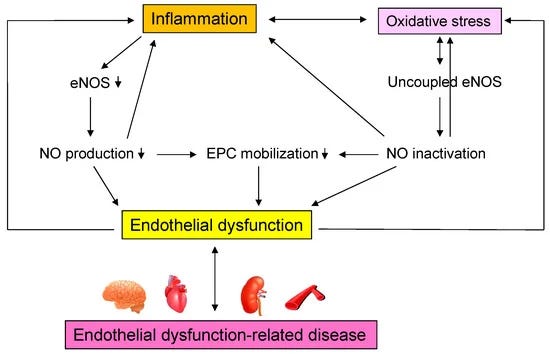The game-changing One Health Principle for women over 40
The closest thing to a "one thing" we have.
It’s typical for influencers to say midlife women need to do “one thing” to be healthy. Whether that’s taking estrogen, getting X amount of protein, or lifting weights, midlife women are inundated with one thing messaging.
And I know in some ways I’ve added to the confusion because as I gather information, I share it with you. Sometimes before I’ve had time to flesh it out yet.
But now I’m working to package it into something that is much easier to understand. That’s why I love books. It's the chance to bring everything together in a way that is easy to understand.
And I’ve been wanting to talk about something that is the closest to the one thing that we have in the midlife space. It's not focused on one activity, it's focused on one health principle.
Principle vs. what you do
When I looked up principle on Dr. Google, this was the first definition to come up:
“a fundamental truth or proposition that serves as the foundation for a system of belief or behavior or for a chain of reasoning.”
It’s the foundation or overarching theme. For instance, we know that having meaning and purpose in life is important. That’s a principle. But what we do to achieve it will be different for different people. Some find meaning through their work, while others through raising children (or both). In the beginning, at least, it’s not so much what a woman does, it’s the principle.
Take moving your body and gaining strength. This is a principle. No one is arguing that exercise isn’t important. Some women may run, others play tennis or cycle. To build strength, options include weightlifting, power yoga, and bodyweight exercises.
And so, I want to talk about a health principle I think every woman should understand. It’s taken me a while to figure it out. It’s like putting the pieces of a gigantic puzzle together.
And it starts with the side of midlife women that we don’t talk about enough, and that is the effects of aging.
The two best buddies of aging: inflammation and oxidative stress
For years, scientists have been grappling with the question of why we age. What are the mechanisms that make the body slowly breakdown and eventually die?
Even though there are different theories on aging, it’s important to understand that aging does not have one trigger. In fact, there is a unified theory of aging which posits that its many connected processes happening together.
This is exciting and confusing all at the same time.
One dominant theory since the 1950s is The Free Radical theory of aging. This theory posits that aging-associated increases reactive oxygen species (ROS) cause damage to the body.
As I’ve written about before, oxidative stress, which is the imbalance between the production of reactive oxygen species or reactive nitrogen species (RNS) <free radicals> and antioxidants that detoxify them. Since antioxidants help eliminate ROS/RNS, experiments were conducted with antioxidant vitamins, but the results were disappointing.
Another theory that has been developed is known as "inflammaging." Aging is linked to a constant, low-grade inflammation which can damage healthy cells. It's not surprising that inflammation and oxidative stress are linked to many chronic health conditions.
Here's the thing. Oxidative stress and inflammation are like that annoying couple you always see together. Inflammation increases ROS/RNS and ROS/RNS increases inflammation. A review of the evidence puts puts it this way:
“inflammation and oxidative stress are closely related pathophysiological events that are tightly linked with one another… As the inflammatory process can induce oxidative stress, the oxidative stress can also induce inflammation through activation of multiple pathways.”
So, when one person talks about inflammation, they also are talking about oxidative stress and vice versa. But there’s a third element that is often left out but is vital.
Diminishing nitric oxide
Nitric oxide (NO) is a gas secreted from endothelial cells that line blood vessels. It helps keep arteries flexible–and plaque from forming — with good blood flow, amongst many other amazing things. I call it the magic midlife molecule and if you haven’t already, you can read about here.
By the time we reach 40, nitric oxide declines by about half of what it was in our twenties. Most likely because of the gradual rise of oxidative stress and inflammation.
With oxidative stress, the free radicals cause an uncoupling of the enzyme needed to make nitric oxide (Enos). Inflammation not only causes damage to blood vessels, further decreasing the release of nitric oxide, but it also increases the enzyme Inos that uses NO to increase increase free radicals, causing a further decline.
The term for a lack of the vasodilator NO in the endothelium is endothelial dysfunction. According to a 2021 review in International Journal of Molecular Sciences:
“Endothelial dysfunction is generated when there is an imbalance in the production or bioavailability of endothelium-derived nitric oxide (NO), generating a decreased vasodilator response and a prothrombotic and proinflammatory endothelium.”
You can see below how it’s the first step to cardiovascular disease with the bestie’s inflammation and oxidative stress as causative agents.
It’s not just cardiovascular disease
Although heart disease is a big deal and the number one cause of death in women, endothelial dysfunction is even more far-reaching.
Researchers have linked insulin resistance, which is the body's reduced ability to get blood glucose into cells, to endothelial dysfunction in a reciprocal relationship. For instance, NO-dependent blood flow to skeletal muscle accounts for 25-40% of glucose uptake. Not only that, but research has shown that high glucose decreases NO, creating a vicious cycle.
Endothelial dysfunction contributes to impaired insulin action, by altering the transcapillary passage of insulin to target tissues
Cersosimo, Diab Met Res Rev, 2006 Nov-Dec;22(6):423-36
Endothelial dysfunction is also behind coronary microvascular disease (CMD), a type of heart disease that occurs in the microcirculation that is more common among women.
Not only that, but CMD, also called small vessel disease, is behind other diseases more common in women.
A review in the Journal of Woman’s Health reveals the impact of small vessel disease on multiple organ systems and its connection to common women-centric diseases such as Alzheimers, lupus, heart failure with preserved ejection fraction, preeclampsia and rheumatoid arthritis.
Along comes changing hormones
Let’s recap and add on. As we age, we become more vulnerable to oxidative stress and inflammation that, of course, varies in women. This is so gradual we don’t even notice it.
But we also have our sex hormones, estrogen and progesterone, doing heavy lifting. Both hormones increase nitric oxide to keep good blood flow. This makes sense given that during every menstrual cycle the body is preparing for a potential pregnancy.
Estrogen is also a potent antioxidant that helps keep oxidative stress at bay. Think of sex hormones as star players on a sports team. They can carry the slack of the other players who aren’t stepping up.
So, when these hormones eventually decline (progesterone 5 years and estrogen 2 years before the last period) it can destabilize everything, sending this imbalance into action.
Where oxidative stress/inflammation goes up and NO goes down. It’s where aging meets hormone decline, what I call Aging Pause.
This, in return, can set the scene for endothelial dysfunction, the silent pre-pre disease state most women don’t know they have. I say can because it doesn’t have to be this way. And if it’s already started, it can be reversed.
The 6 degrees of the one health principle
You may have heard of the 6 degrees of Keven Bacon, where people challenge each other to just name a random actor, which eventually leads them to the actor Kevin Bacon.
This is also true with the one health principle. Of course, this principle is not the cause of every health issue, but as I have previously mentioned, it’s the closest thing to a one thing we’ve got. Let’s use a few examples.
Diminishing muscle mass occurs with aging pause. Contracting muscles by lifting heavy things and endurance training increases the antioxidant activity of myokines (muscle messengers) that, in turn, decreases the pro-oxidant activity of a muscle degrading substance called myostatin.
With prolonged muscle disuse, myostatin increases, myokines decrease, which can cause inflammation and oxidative stress.
We also have muscles to support our airway, which weaken during aging pause, putting midlife women at risk for sleep disordered breathing. This not only can disrupt sleep but cause oxygen levels to decline during sleep.
For the body to adapt to lower oxygen levels, it produces hypoxia inducible factors (HIFs). These HIFs decrease the expression of Enos, decreasing nitric oxide and increasing free radicals.
One last example is adverse childhood experiences (ACE) and/or trauma. The more ACEs people have, the higher the risk for multiple medical conditions. Early overwhelming stress disrupts the stress response, increasing inflammatory markers and compromising the one health principle.
A 2018 study in Menopause with 272 women aged 40-60 found that 60% had at least one traumatic exposure and 18% had three or more. The women with three or more traumas had a significantly lower flow-mediated dilation, a marker of endothelial dysfunction.
Why should we be surprised that these women, as a recent study showed, are at an increased risk for more severe menopausal symptoms?
The one health principle has come up repeatedly in my research. At first, I focused on nitric oxide, but eventually I realized how oxidative stress and inflammation are central to the bioavailability of NO. Like an ugly fight, it doesn’t matter who started it, the damage is the same.
Fine tuning your lifestyle
Hormone therapy is one tool to help women, but it’s simply not enough to tackle the one health principle. After all, it’s not an ideal situation to have one- or two-star players on a team. A team performs better with many powerful players, so even if one leaves, they can still succeed.
And this is the best news about midlife women’s health. There are many ways to decrease oxidative stress and inflammation and increase nitric oxide. From fine-tuned nutrition, exercise, breathing, sleep, stress, and emotional health, we can do so much.
Because it starts with tackling the reasons for the increases in oxidative stress and inflammation, and declines in nitric oxide. My guess is those studies done with antioxidant vitamins failed because it’s only a small fraction of the solution. And that’s also why hormone therapy is not the miracle so many say it is.
We need a toolbox of things we can do to support the one health principle. I wish there was one thing, but that’s not the reality. But by fine-tuning our lifestyle (with or without hormone therapy) I believe our health can be strong. Shall I say, midlife strong.
2024 is the year we get more into detail about the six lifestyle factors. I’m going to have some guests that are doing innovative work.
And our first 21-day challenge will focus on gut health (it won the survey). I hope to start that in February so stay tuned.
Share this important one health principle with a friend. Understanding this is game changer for every woman.
Let me know your comments and questions.







And now we have Covid, which infects endothelial cells.
Great job pulling of of your research into a very clear and concise post. I had forgotten about NO and its roll. I had an integrative Dr tell me about this year's ago. More beets, please! Lol